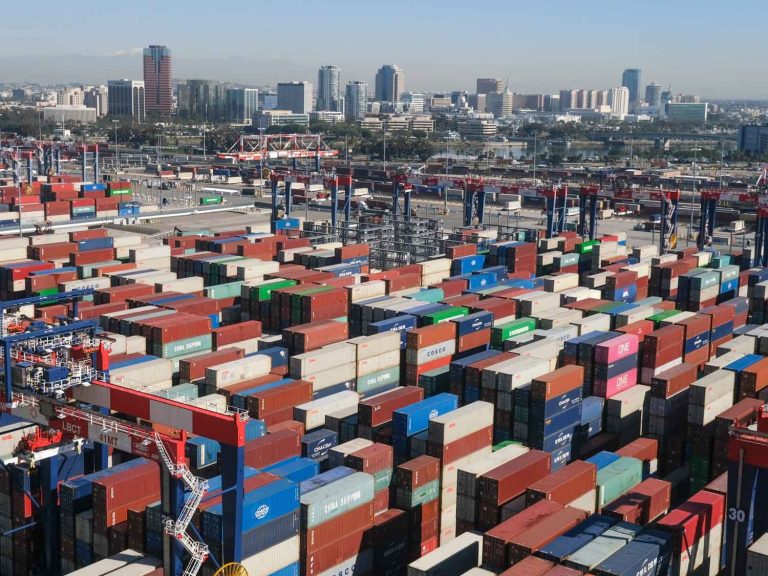
Date:
North American Sea Freight Market Strained
The North American sea freight market faces ongoing challenges, with recent labour actions on the US East Coast fuelling local anxieties and adding congestion and capacity pressures on the West coast.
The three-day strike by the International Longshoremen’s Association (ILA) on the US East Coast in early October sent ripples across the industry, as importers scrambled to reroute shipments to West Coast ports. Record-breaking import volumes in Los Angeles and Long Beach in September have strained rail and terminal operations, pushing rail container dwell times over nine days, their highest in two years.
The impact of the ILA strike is compounded by recent actions in Canada, with Montreal dockworkers initiated a 24-hour strike last Sunday the 27th October, following earlier disruptions that have halted overtime work across the port.
This seasonal surge in imports is expected to taper off in November, as most holiday merchandise arrives in the US by late October to be available for Black Friday and other peak shopping events. However, if contract negotiations between the ILA and East Coast employers, which are due to resume in November, remain unresolved into December, West Coast ports could capture a larger share of shipments, keeping demand elevated longer than usual on the Pacific Coast.
The main issue outstanding between the ILA and USMX is the use of terminal automation. The previous contract permitted semi-automation with union and terminal agreement on staffing but banned full automation. In this bargaining cycle, the ILA is pushing for a complete ban on all automation types.
Montreal’s container volumes have already dropped by nearly a quarter since 2022, with a growing shift of cargo to US East Coast ports—though the labour situation in the US may ultimately reverse this trend if Canadian ports gain relative stability.
Impact of the US presidential election on container shipping
Looking ahead, next week’s US presidential election introduces potential regulatory and economic uncertainties for the container shipping market. A second term for Donald Trump could bring a more protectionist stance, with proposed tariffs of up to 20% on all imports and as high as 60% on goods from China. Such policies would likely dampen US demand for imports, reshaping sourcing and supply chain strategies across Asia, where countries like Vietnam and India are already gaining market share as businesses diversify away from China.
By contrast, a potential administration under Kamala Harris is expected to support US industries through subsidies rather than aggressive tariffs, reducing the immediate risk of sharp import declines. However, increased government support for domestic production could still influence trade patterns, with downstream effects on global shipping demand. In either scenario, US trade policies will continue to play a significant role in shaping the container shipping market, particularly in trans-Pacific routes.
As North America’s sea freight market adapts to labour uncertainties and fluctuating trade policies, shippers face a complex landscape of demand pressures, capacity constraints, and fluctuating costs.
As always, we will guide you through the most import strategic adjustments, such as diversifying shipping routes and anticipating regulatory changes, to maintain supply chain stability and manage costs in the months ahead.
To discuss the current situation and how Metro can protect your North American supply chain, please EMAIL Andrew Smith, Chief Commercial Officer.
